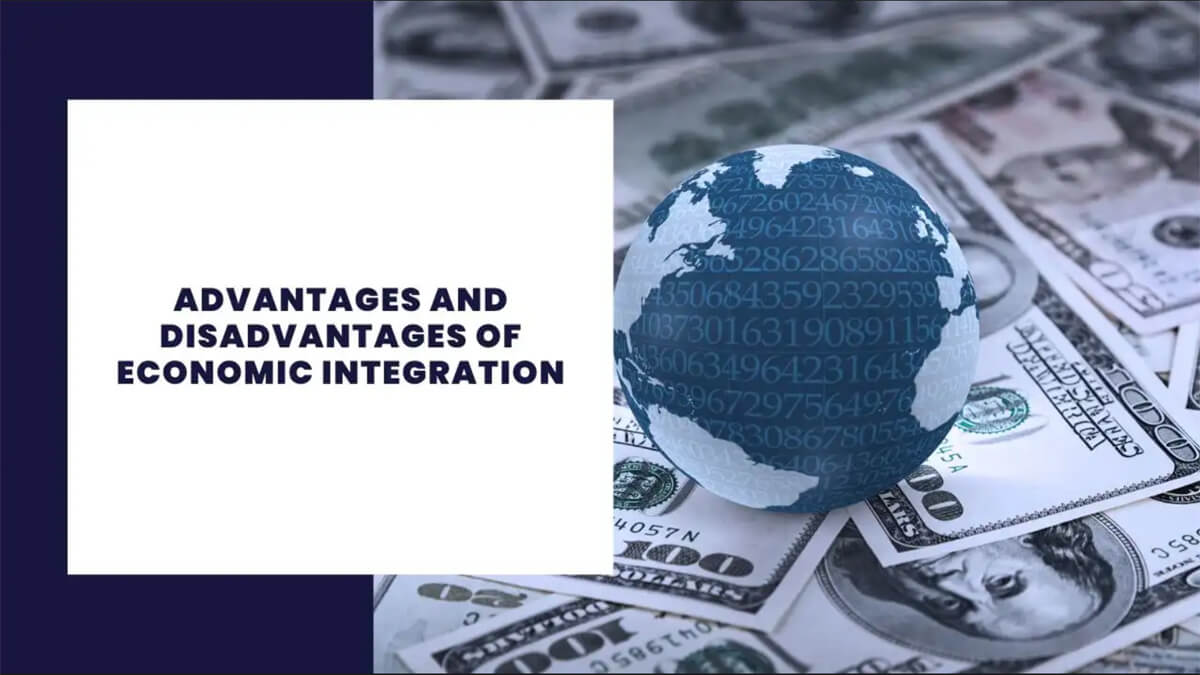Integration economics, characterized by the collaboration and interconnectedness of nations through economic alliances, has been a defining force in the contemporary global landscape. As countries grapple with the complexities of integration, it is crucial to scrutinize both the advantages and disadvantages that accompany this transformative process. This article aims to dissect the intricacies of integration economics, shedding light on the nuanced dynamics that shape its impact on participating nations.
Advantages of Integration Economics:
Facilitated Trade and Market Expansion:
One of the most evident advantages of integration economics is the facilitation of trade and expanded market access. By dismantling trade barriers and harmonizing regulations, member nations can tap into larger consumer bases, fostering increased economic activity. This results in heightened opportunities for businesses to thrive and consumers to access a broader range of goods and services.
Economies of Scale and Cost Efficiency:
Integration often leads to the formation of larger economic blocs, enabling economies of scale. Through increased production volumes, industries can achieve cost efficiencies, ultimately leading to lower prices for consumers. This not only enhances the competitiveness of businesses but also contributes to the overall efficiency of production processes within the integrated economy.
Political Stability and Diplomatic Collaboration:
Economic integration can contribute to political stability through enhanced diplomatic collaboration. The shared economic interests among member nations create a vested interest in maintaining peaceful relations. This mutual dependency fosters cooperation, reducing the likelihood of conflicts and promoting a stable geopolitical environment.
Technology Transfer and Innovation:
Collaborative economic endeavors facilitate the transfer of technology and knowledge between member nations. Advanced economies can share technological advancements with their counterparts, catalyzing innovation and progress. This exchange accelerates the development of emerging economies, contributing to a more balanced and globally competitive landscape.
Disadvantages of Integration Economics:
Sovereignty Concerns and Loss of Control:
A significant drawback of integration economics is the potential erosion of national sovereignty. Participating nations often have to relinquish some degree of control over their economic policies to adhere to the terms of integration agreements. This can lead to concerns about the loss of autonomy in decision-making.
Inequality and Social Disparities:
Integration may exacerbate existing inequalities within and between member nations. While certain sectors may flourish due to increased market access, others may face challenges or decline. This can result in social disparities, affecting employment, income distribution, and overall societal well-being.
Dependency Risks and Vulnerability:
Overreliance on a limited number of trading partners can expose nations to economic vulnerabilities. Shocks, policy changes, or geopolitical tensions in a major trading partner can have cascading effects, jeopardizing the stability of the integrated economy.
Cultural Homogenization and Identity Concerns:
The integration of diverse cultures within an economic bloc may lead to concerns about cultural homogenization. The dominance of certain cultural influences may overshadow or dilute the unique identities of smaller member nations, sparking worries about the preservation of cultural heritage.
Conclusion:
As nations navigate the path of integration economics, they must grapple with the dual nature of its impact. While the advantages, such as facilitated trade and diplomatic collaboration, present opportunities for shared prosperity, the disadvantages, including sovereignty concerns and social disparities, underscore the importance of cautious and inclusive policymaking. Striking a balance that maximizes the benefits while addressing the drawbacks is the key to unlocking the true potential of integration in fostering sustainable and equitable global development.
